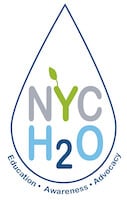Urban explorer, Steve Duncan, showed 14 attendees the hidden history of Canal St and explains the waterway functioning both today and in the past.
New York City’s very first enclosed sewer is also a remnant of the freshwater sources that were once fundamental to the city’s origins. What is now the old Canal Street sewer, running underneath Canal Street to the Hudson River once began as a marshy area between Grand St and Greene St.
In the 1730s, Anthony Rutgers became the owner of the marshes and meadows through a royal grant, and over the next decades he and his son-in-law Leonard Lispenard dug a ditch to speed the drainage route along the present-day Canal street. By the end of the 18th century, however, the fast- growing city had polluted the Collect Pond to the point that the water was unusable—a fetid stew of sewage and the refuse from slaughterhouses,tanneries, and breweries. Outbreaks of cholera forced the city to take action.
The original Collect Pond was filled in, but the underground springs that supplied it still continued to flow. In about 1811, the city enlarged Rutgers’ ditch and lined it—first with planks, and later with stone—to better drain the area. This was effectively an open sewer, and the slow-moving water stank. Around 1819 it was replaced with a covered, brick-arched tunnel, which was buried beneath the street to become the city’s first enclosed sewer.




